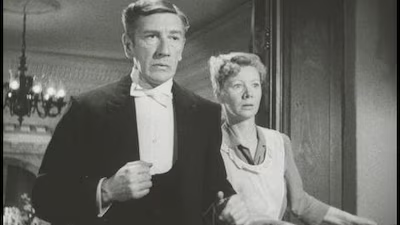Rene Clair

About
Biography
Filmography
Family & Companions
Bibliography
Biography
Rene Clair almost single-handedly revived French film comedy after WWI, adapting the pre-war comic tradition to sound technology and the realities of the post-war era. Though he eventually broadened his range of material and faltered toward the end of his career, he will always be remembered as France's first great director of comedies.
After short stints as a journalist, an actor under Feuillade and Protozanov and an assistant to Baroncelli, Clair made an engaging satire of French society, "Paris qui dort," in 1924. In this science fiction fantasy, an angry scientist invents a ray gun which paralyzes the French capital. Those few who escape the ray wander throughout Paris poking fun at various people they encounter, though they end up reenacting the very gestures and attitudes they initially mocked. With its flat sets, rudimentary animation and stock character types recalling both American slapstick and the work of Georges Melies, "Paris qui dort" combined social satire with a witty exploration of film's ability to manipulate time and motion. Clair followed with the deliciously outrageous dada masterpiece, "Entr'acte" (1924), based on notes by Francis Picabia. With music by Erik Satie and starring Marcel Duchamp and Man Ray, "Entr'acte" was made for the Ballet suedois production of Picabia's "Relache" (literally, "performance canceled"). The opening sequence is virtually plotless, structured along graphic and rhythmic principles and including a number of comic gags, while the second half shows a crowd of mourners chasing a camel-drawn hearse through the streets of Paris.
Clair next made a series of fantasy works "a la Melies," including "Le Voyage imaginaire" (1925) and "Le Fantome du Moulin-Rouge" (1926). He established an international reputation with "The Italian Straw Hat" (1927), a brilliant updating of Labiche-Michel's play. An early and vocal opponent of sound film, Clair nonetheless proved its capacity for eloquence with "Under the Roofs of Paris" (1930) and two other masterpieces, "Le million" (1931) and "A nous la liberte" (1932), in which he perfected his command of comic timing and gift for almost musical plot structure.
Following the unexpected failure of "Le dernier milliardaire" (1934), Clair moved to England. There he made two films, including "The Ghost Goes West" (1935), in which an American (Robert Donat) transports a castle back to the States, only to discover that it's haunted. With the coming of WWII Clair himself headed west. Unlike other French exiles such as Jean Renoir, Clair fared rather well in Hollywood, making the successful comedy-fantasies "The Flame of New Orleans" (1941) with Marlene Dietrich and "I Married a Witch" (1942) with Fredric March and Veronica Lake (a feud between these two made for lively filming). In "It Happened Tomorrow" (1944) Dick Powell plays a reporter who can predict the future, a journalistic advantage which leads to unexpected complications when he learns of his own death. Clair completed his US stay with a highly suspensful Agatha Christie adaptation, "And Then There Were None" (1945).
Clair's post-war return to France coincided with a turn to more demanding subject matter. "Man About Town" (1947) is a nostalgic reflection on the silent film era which also condemns totalitarianism and the irresponsible use of science. It was followed by a free adaptation of the Faust legend, "Beauty and the Devil" (1950), starring Michel Simon (as Mephisto) and Gerard Philipe. Philipe returned in "Beauties of the Night" (1952), a comic fantasy in several timeframes based on D.W. Griffith's "Intolerance," and "The Grand Maneuver" (1956). Neither film was particularly successful, and "Gates of Paris" (1957) continued Clair's undeniable decline.
Although elected in 1960 to the Academie Francaise, Clair found that his last few films had badly tainted his reputation. Nevertheless, he is now regarded as one of the preeminent French filmmakers, the man whose wit, irony and delicate sense of timing inspired both Chaplin and the Marx Brothers.
Filmography
Director (Feature Film)
Writer (Feature Film)
Producer (Feature Film)
Music (Feature Film)
Life Events
1917
Served in volunteer ambulance corps at the front during WWI, invalided out with injured spinal column after several months
1918
Retired to Dominican monastery after experiencing a religious crisis
1919
Worked as newspaper reporter for "L'Intransigeant"
1920
First film as actor in "Le Lys de la vie"
1921
Adopted name Rene Clair
1922
Went to Brussels with brother Henri to study work of director Jacques de Baroncelli
1922
First film as editor, "Le Theatre et comedia illustre"
1924
First film as director and screenwriter, "Paris qui dort/The Crazy Ray"
1929
Worked as film reviewer in London
1935
Hired by Alexander Korda to direct in London
1938
Returned to France
1940
Playwright Robert Sherwood obtained visa for Clair and his family; immigrated to USA; signed contract with Universal
1942
Joined Paramount
1959
Directed first stage work
1965
Directed final film, "Les Fetes Galantes"
Photo Collections
Videos
Movie Clip












Family
Companions












